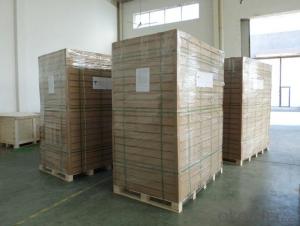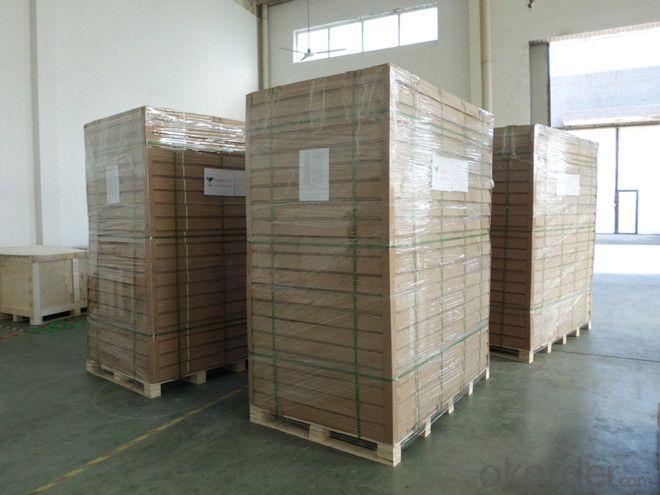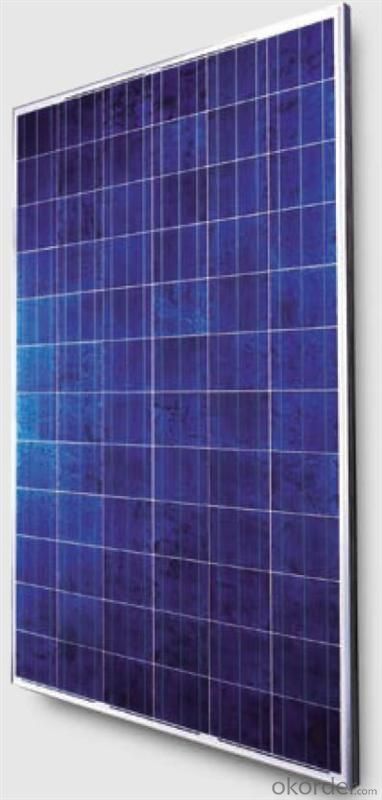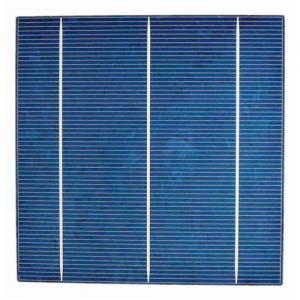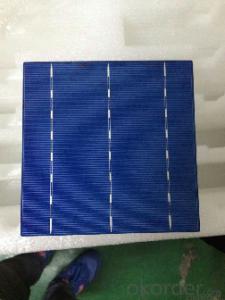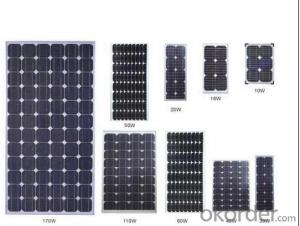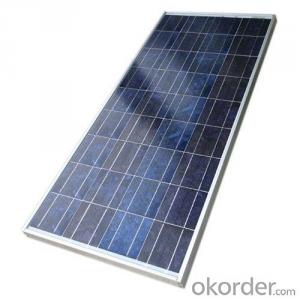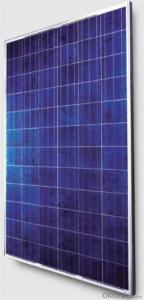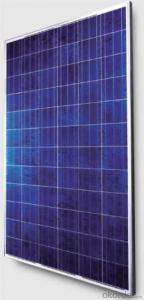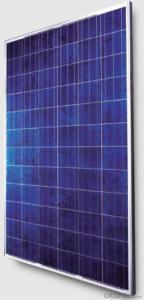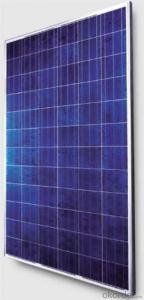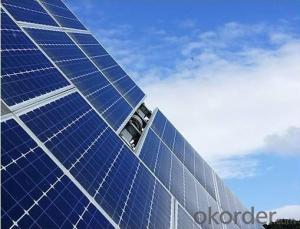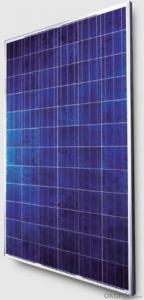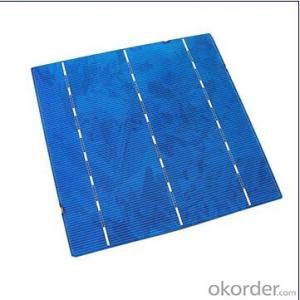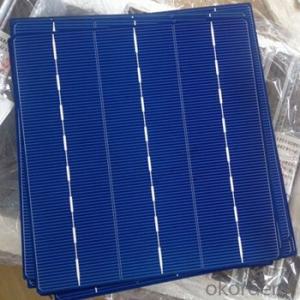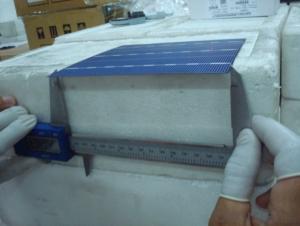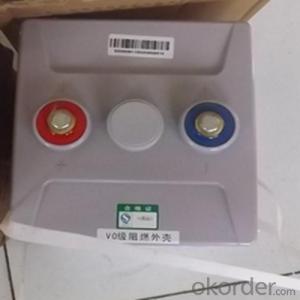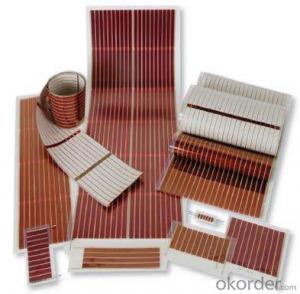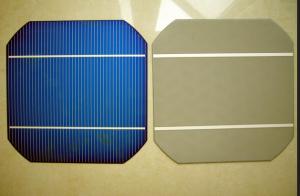Spray Paint Solar Cells - CNBM PV Silicon Modules Made in China for Overseas Market
- Loading Port:
- Shanghai
- Payment Terms:
- TT OR LC
- Min Order Qty:
- 1 pallet
- Supply Capability:
- 100000000 pallet/month
OKorder Service Pledge
OKorder Financial Service
You Might Also Like
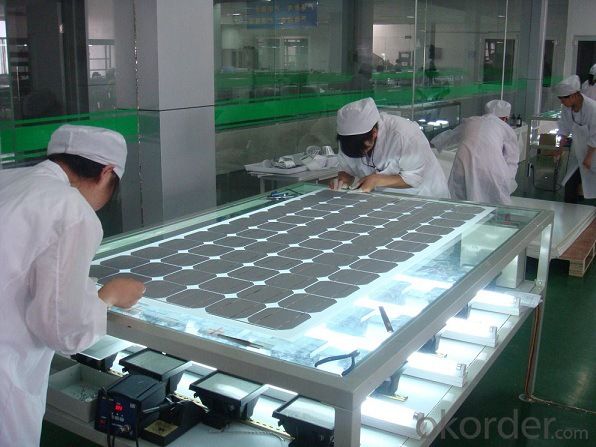
Specifications:
solar panels from 5W--300W, made of TAIWAN MOTECH brand cells,with CO in TAIWAN,Mono and Poly with VDE,IEC,CSA,UL,CE,ISO.
We import solar cells from Taiwan Motech brand, with this CO in taiwan and our CSA certification,we can still sell goods to Anti-dumping areas like USA. Our main products are solar panels, off grid and on grid solar home systems , solar street lighting systems, solar water heating system,solar pump,solar attic fan, solar DC LED lights and solar DC refrigerators.
Certificates : ISO, CE, VDE IEC, MCS, CSA-UL, CEC.
Delivery time: sample 10days, order 25-30days.
Sample: charged.
Payment term: T/T 30% as deposit, 70% before shipment. Or irrevocable L/C at sight.
Trade term: FOB Shenzhen or CIF destination seaport or Airport.
Characteristics:
I.Solar Cell : High efficiency crystalline solar cell. Even if under the weak light, the solar module can produce maximum power output.
II.Tempered glass (toughened glass): Anti-reflecting coating and high transmission rate glass increase the power output and mechanical strength of solar module.
III.EVA and TPT: Using high quality EVA and TPT to prevent destroying and water.
IV.AI frame: Without screw, corner connection. 6 holes on the frame can be installed easily.
V.Junction box: Multi function junction box with water proof.
VI.Long lifetime: ≥25 years; Less power decrease.
VII.Good performance of preventing from atrocious weather such as wind and hails.
VIII.Resisting moisture and etching effectively, not effected by geology.
IX.The certificate issued by international authority: UL, TUV, IEC, VDE, CE.
Quality and Safety
1. Rigorous quality control meets the highest international standards.
2. High-transmissivity low-iron tempered glass, strong aluminium frame.
3. Using UV-resistant silicon.
4. IS09001/14001/CE/TUV/UL
Warranties
1. 10 years limited product warranty
2. 15 years at 90% of the minimal rated power output
3. 25 years at 80% of the minimal rated power output
Technical date :
ITEM NO.: | Poly 156*156 cell ,60pcs . Power range from 230Wp-260Wp | ||||||
Maximum Power(W) | 230 | 235 | 240 | 245 | 250 | 255 | 260 |
Optimum Power Voltage(Vmp) | 29.4 | 29.5 | 29.7 | 30.1 | 30.3 | 30.5 | 30.7 |
Optimum Operatige Current(Imp) | 7.83 | 7.97 | 8.08 | 8.14 | 8.25 | 8.37 | 8.48 |
Open Circuit Voltage(Voc) | 36.7 | 36.8 | 36.9 | 37.1 | 37.3 | 37.5 | 37.7 |
Short Circuit Current(Isc) | 8.52 | 8.59 | 8.62 | 8.65 | 8.69 | 8.73 | 8.78 |
Solar Cell: | 156*156 Poly | ||||||
Number of Cell(pcs) | 6*10 | ||||||
Name of Solar Cells | Polycrystalline Cell | ||||||
Size of Module(mm) | 1650*992*40/45/50 | ||||||
Cable & Connector Type | Pass the TUV Certificate | ||||||
Frame(Material Corners,etc.) | Aluminium-alloy | ||||||
Back sheet | TPT | ||||||
Weight Per Piece(KG) | 19.5KG | ||||||
FF (%) | 70-76% | ||||||
Junction Box Type | Pass the TUV Certificate | ||||||
Tolerance Wattage(e.g.+/-5%) | ±3%, or 0-3% | ||||||
Front Glass Thickness(mm) | 3.2 | ||||||
Temperature Coefficients of Isc(%) | +0.04 | ||||||
Temperature Coefficients of Voc(%) | -0.38 | ||||||
Temperature Coefficients of Pm(%) | -0.47 | ||||||
Temperature Coefficients of Im(%) | +0.04 | ||||||
Temperature Coefficients of Vm(%) | -0.38 | ||||||
Temperature Range | -40°C to +85°C | ||||||
Surface Maximum Load Capacity | 5400Pa | ||||||
Allowable Hail Load | 23m/s ,7.53g | ||||||
Bypass Diode Rating(A) | 12 | ||||||
Warranty | 90% of 10 years, 80% of 25 years. | ||||||
Standard Test Conditions | AM1.5 1000W/ 25 +/-2°C | ||||||
Packing | carton or pallet | ||||||
1*20' | 14 Pallets / 316pcs | ||||||
1*40'STD | 25 Pallets / 700pcs | ||||||
FAQ:
We have organized several common questions for our clients,may help you sincerely:
1. What’s price per watt?
A: It’s depends on the quantity, delivery date and payment terms of the order. We can talk further about the detail price issue. Our products is high quality with lower price level.
2. Can you tell me the parameter of your solar panels?
We have different series of cells with different power output, both from c-si to a-si. Please take our specification sheet for your reference.
3. How do you pack your products?
We have rich experience on how to pack the panels to make sure the safety on shipment when it arrives at the destination.
4. Can you do OEM for us?
Yes, we can.
5. How long can we receive the product after purchase?
In the purchase of product within three working days, We will arrange the factory delivery as soon as possible. The perfect time of receiving is related to the state and position of customers. Commonly 7 to 10 working days can be served.
- Q: What is the difference between a solar cell and a solar panel?
- A solar cell is a single unit that converts sunlight into electricity, while a solar panel is a collection of multiple solar cells connected together to generate a larger amount of electricity.
- Q: What is the most common type of solar cell?
- The most common type of solar cell is the silicon-based solar cell.
- Q: Can solar cells be used in military vehicles?
- Yes, solar cells can be used in military vehicles. They can help power various electronic systems and equipment, reducing reliance on traditional fuel sources and increasing energy efficiency. Additionally, solar cells can provide a sustainable and renewable energy solution for the military, especially in remote or off-grid operations.
- Q: Are solar cells affected by electromagnetic interference?
- Yes, solar cells can be affected by electromagnetic interference. Electromagnetic interference can degrade the performance of solar cells by disrupting the flow of electrons and causing fluctuations in output power. However, proper shielding and grounding techniques can be implemented to minimize these effects and ensure optimal functioning of solar cells.
- Q: How do solar cells perform in extreme temperatures?
- Solar cells generally perform less efficiently in extreme temperatures. High temperatures can cause solar cells to heat up, leading to a decrease in their electrical output. Similarly, extremely cold temperatures can also impact the performance of solar cells, reducing their efficiency. However, modern solar cell technologies are designed to minimize the effects of temperature on their performance, and many solar panels are equipped with built-in temperature management systems to maintain optimal operation.
- Q: How are solar cells connected to the electrical grid?
- Solar cells are connected to the electrical grid through the use of inverters, which convert the direct current (DC) produced by the solar panels into alternating current (AC) that can be used by homes and businesses. This AC power is then fed into the electrical grid, allowing for the distribution of solar energy to other users and ensuring a reliable supply of electricity.
- Q: What is the role of monitoring systems in solar cell systems?
- The role of monitoring systems in solar cell systems is to gather real-time data on the performance and efficiency of the solar cells. These systems help in identifying any issues or malfunctions in the system, allowing for prompt maintenance and repairs. Monitoring systems also provide valuable insights into the energy production, consumption, and overall system health, enabling optimization of solar power generation.
- Q: Can solar cells be used in disaster relief efforts?
- Yes, solar cells can be used in disaster relief efforts. Solar cells provide a reliable and sustainable source of electricity, which is crucial in disaster-stricken areas where power infrastructure is damaged or non-existent. Solar panels can be quickly deployed to provide immediate access to electricity for emergency services, communication devices, medical equipment, and lighting in disaster response centers, hospitals, and temporary shelters. They are also cost-effective and environmentally friendly, offering long-term benefits for affected communities during the recovery and rebuilding process.
- Q: What is the efficiency of a solar cell?
- The efficiency of a solar cell refers to the percentage of sunlight it can convert into usable electricity.
- Q: How are solar cells used in agricultural applications?
- Solar cells are used in agricultural applications to power various farming equipment, such as irrigation systems, pumps, and electric fences. They also provide electricity for lighting and heating in greenhouses and can be used to charge batteries for storing energy to be used during low sunlight periods.
Send your message to us
Spray Paint Solar Cells - CNBM PV Silicon Modules Made in China for Overseas Market
- Loading Port:
- Shanghai
- Payment Terms:
- TT OR LC
- Min Order Qty:
- 1 pallet
- Supply Capability:
- 100000000 pallet/month
OKorder Service Pledge
OKorder Financial Service
Similar products
Hot products
Hot Searches
Related keywords
